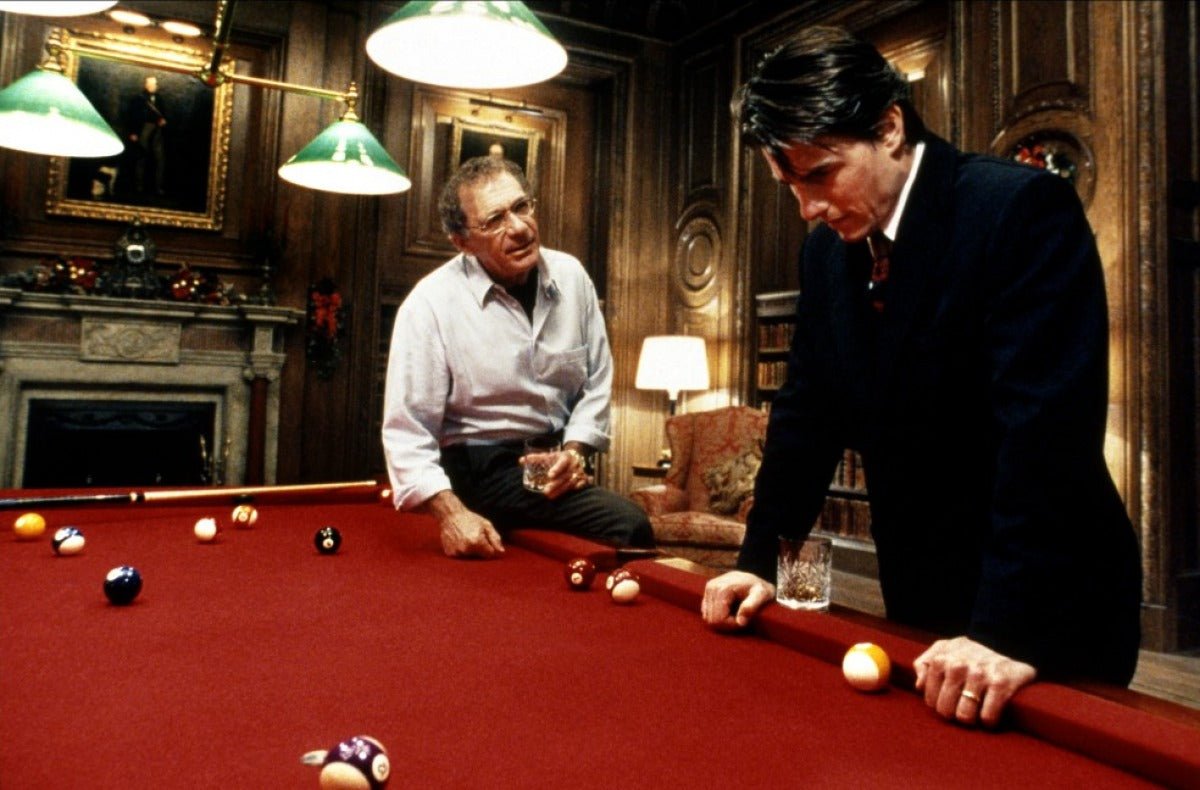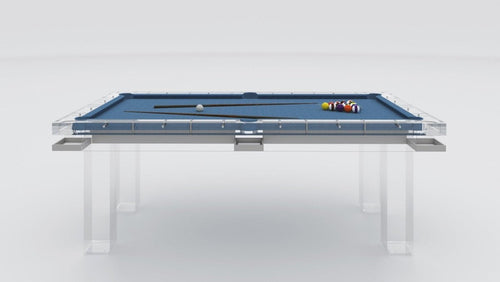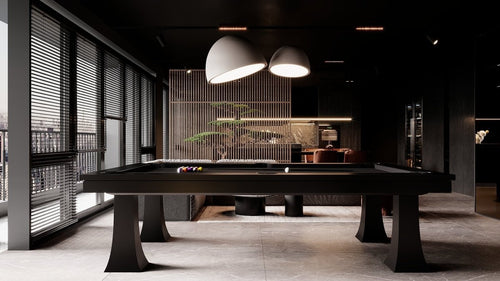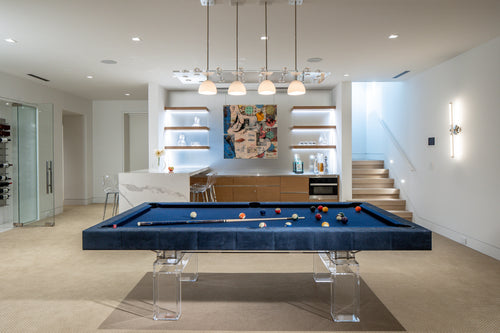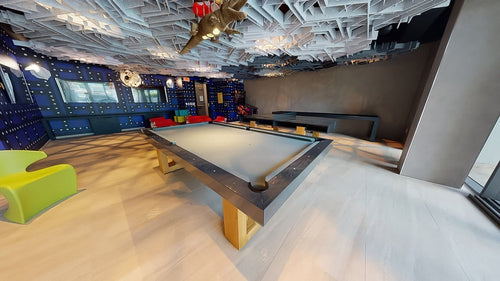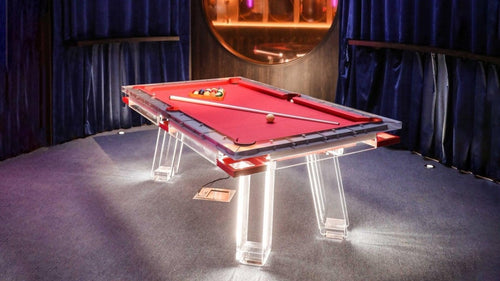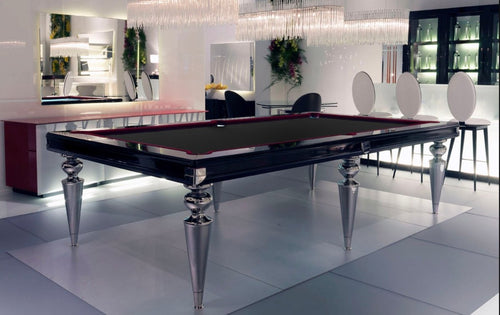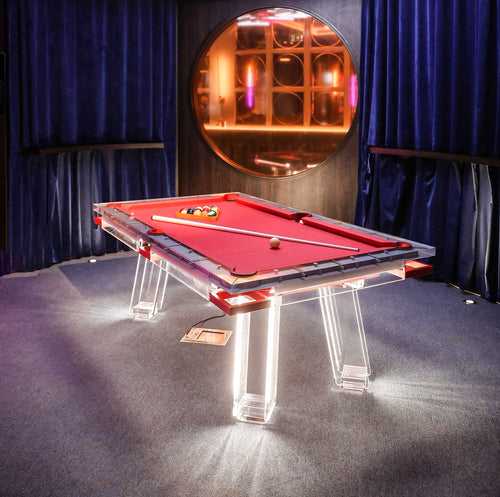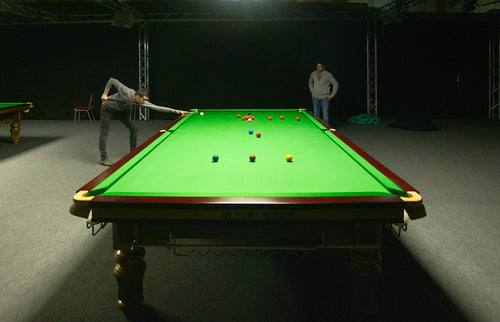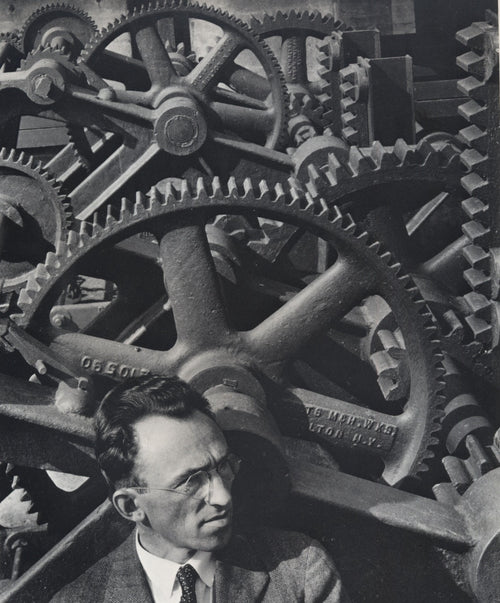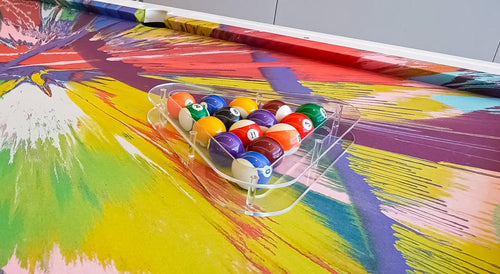Enjoy our modern designs
Stanley Kubrick’s filmography is a testament to a master auteur's unwavering dedication to pushing the boundaries of cinema, with each film standing as a unique testament to his meticulous and visually stunning approach to storytelling. "Eyes Wide Shut" (1999), Kubrick’s final film before his death, remains one of the most mysterious and debated pieces of his oeuvre. Let’s delve into its pivotal and enigmatic pool table scene, deconstructing its essence through the lens of a cinephile.
Anatomy of the Scene

At the heart of a sprawling yet dimly lit mansion, we find Tom Cruise's character, Dr. Bill Harford, engaged in a cryptic conversation with his wealthy friend, Victor Ziegler (played by Sydney Pollack). The setting is a billiards room, where their words are underscored by the ambient sounds of the mansion, rather than the clinking of pool balls. This scene, while seemingly mundane, is one of the most psychologically loaded in the entire film, brimming with suspense, underlying power dynamics, and symbolic significance.
Visual Subtext and Framing
Much like a seasoned strategist calculating the potential moves in a high-stakes game, Kubrick's framing in this scene is both meticulous and filled with intent. Contrary to traditional billiards rooms featuring green felt, the pool table in this scene is adorned with a rich red felt, creating a striking contrast against the room's dark woodwork. This red surface serves as a barrier, a neutral ground that separates Harford and Ziegler, yet binds them in the same space, echoing themes of isolation, power, and control.
The pool table itself becomes a silent character in the narrative. Its presence signifies a meeting of minds, a place where strategies are laid bare without the overt display of a game. The absence of actual gameplay shifts the focus from physical competition to a mental and emotional chess match between the characters.
The Echoes of Power Dynamics

A traditional game of billiards is not just about potting balls; it's also a mental game of strategy and positioning. Kubrick leverages this metaphor throughout the scene. The power dynamic shifts and flows, much like the ebb and flow of influence in high-stakes negotiations, where one misstep can alter the entire outcome.
In this context, Ziegler exerts control over the conversation, guiding it with precision and authority. Unlike a pool game where the cue is physically held to direct the balls, Ziegler maintains his dominance through his dialogue and demeanor, subtly steering Harford’s responses. Harford, in turn, navigates the conversation carefully, responding and reacting to Ziegler’s strategic impartation of information.
The Resounding Silence
Kubrick's approach to sound design plays a critical role in this scene. The absence of the typical sounds associated with pool games—such as the clinking of balls or the scraping of the cue—heightens the tension between the two characters. Instead, the room's ambient sounds and the characters' dialogue take center stage, making each word and pause feel deliberate and weighty. This controlled silence underscores the suspense and high stakes of their interaction, much like the calculated quietude often found in intense strategic confrontations.
Cueing up the Finale
In classic Kubrick fashion, the pool table scene is filled with complex layers of symbolism and rich thematic undercurrents. It operates as a microcosm for the film's broader exploration of power, deception, and the blurred lines between reality and illusion. From the detailed mise-en-scène to the clever application of a traditional billiards table as a stage metaphor, the scene exemplifies Kubrick's craftsmanship and his enduring legacy as one of cinema's greatest visionaries.
"Eyes Wide Shut" invites viewers to ponder the intricate dance of power and vulnerability, much like a game of billiards where every move has consequences. Kubrick masterfully uses this scene to delve into the psychological depths of his characters, leaving audiences to unravel its enigmatic layers long after the credits roll.
Conclusion
Stanley Kubrick’s "Eyes Wide Shut" continues to captivate and mystify audiences decades after its release. The pool table scene, with its deliberate deviations from traditional billiards imagery and sound, serves as a powerful narrative device that encapsulates the film’s central themes. By dissecting this scene, we gain a deeper appreciation for Kubrick’s ability to infuse everyday settings with profound symbolic meaning, solidifying his status as a true auteur of modern cinema.


